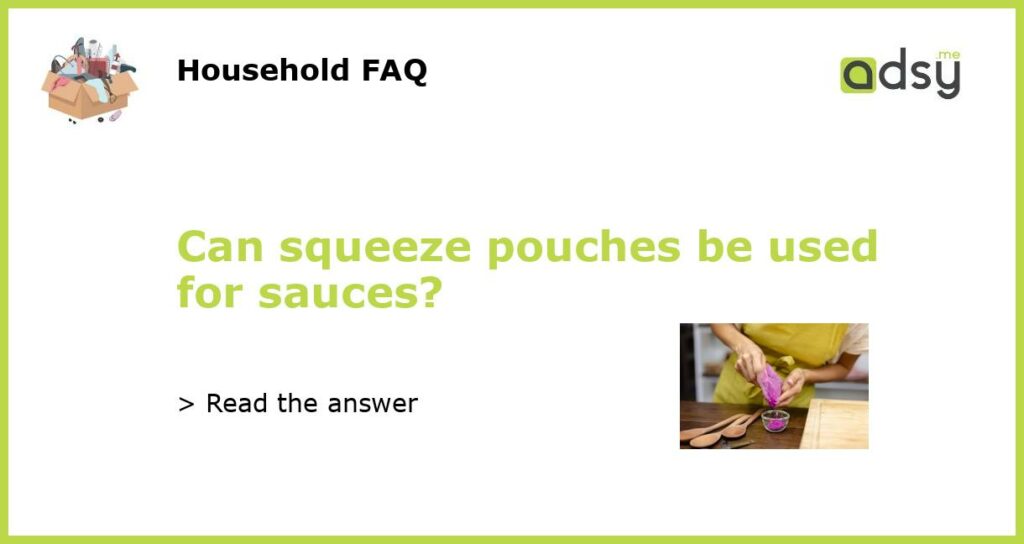Yes, squeeze pouches can be used for sauces
Squeeze pouches are increasingly popular when it comes to packaging various food products. One common use for squeeze pouches is for sauces. In fact, many sauce manufacturers are now opting for this type of packaging due to its convenience and user-friendly design.
Why are squeeze pouches a good option for sauces?
There are several reasons why squeeze pouches are a great choice for packaging sauces:
1. Easy dispensing: Squeeze pouches are designed with a narrow opening and a nozzle that allows for easy and controlled dispensing of the sauce. This makes it convenient for consumers to pour the desired amount of sauce without any mess or wastage.
2. Portability: Squeeze pouches are lightweight and compact, making them easy to carry around. This is particularly beneficial for those who enjoy outdoor activities such as picnics, barbecues, and camping, as they can conveniently pack the sauce pouch without the need for additional containers or utensils.
3. Longer shelf life: Squeeze pouches are made of materials that provide an effective barrier against oxygen and light, which helps extend the shelf life of the sauce. This is important for both manufacturers and consumers, as it ensures that the sauce remains fresh and flavorful for a longer period of time.
How are squeeze pouches used for sauces?
Squeeze pouches for sauces typically come in different sizes, ranging from single-serving pouches to larger sizes for family or commercial use. Here’s how they are commonly used:
1. Single-serving pouches: These are small-sized pouches that contain a single serving of sauce. They are commonly seen in fast-food chains, restaurants, and food delivery services, where customers can easily tear open the pouch and squeeze the sauce directly onto their food.
2. Squeeze bottles: Some manufacturers offer squeeze pouches that are designed to fit into a reusable squeeze bottle. This allows consumers to easily refill the bottle with their favorite sauce from the pouch, providing a more sustainable and cost-effective option.
3. Multi-use pouches: Larger squeeze pouches are often used in commercial kitchens, food service establishments, and catering companies. These pouches typically come with a resealable cap or closure, allowing the sauce to be dispensed multiple times and stored/refrigerated between uses.
Are there any limitations to using squeeze pouches for sauces?
While squeeze pouches offer many advantages for packaging sauces, there are a few limitations to keep in mind:
1. Viscosity: Highly viscous sauces, such as thick tomato paste or some salad dressings, may not flow smoothly through the nozzle of a squeeze pouch. In such cases, manufacturers may need to adjust the consistency of the sauce or consider alternative packaging options.
2. Cost: The initial cost of investing in machinery and equipment for producing squeeze pouches can be higher compared to other packaging options. However, the long-term benefits, such as increased sales and customer satisfaction, can outweigh the initial investment.
3. Appearance: Some consumers may associate squeeze pouches with lower-quality or lower-priced products. This perception can vary depending on the target market and product positioning. Manufacturers should carefully consider their brand image and packaging design to ensure that squeeze pouches align with their desired market positioning.
In conclusion
Squeeze pouches are a versatile and convenient packaging option for sauces. They offer easy dispensing, portability, and longer shelf life. Different sizes and designs are available to cater to various needs. However, it is important to consider the viscosity of the sauce, the cost of equipment, and the perception of the packaging when deciding to use squeeze pouches for sauces.






